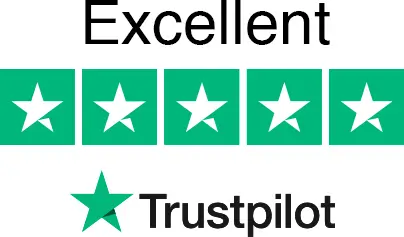Key Takeaways
- If your business faces insolvency in the UK, understanding administration vs liquidation is critical. Each option carries distinct legal, financial, and personal consequences for directors.
- Administration focuses on rescuing the business or achieving higher creditor returns. Liquidation means closing the company and distributing its assets.
- Swift action and professional advice are essential. Delays can lead to wrongful trading, personal liability, or disqualification.
- Picking the wrong process—or failing to meet your legal duties—may result in personal loss, legal investigations, or reputational damage.
- UK legal principles prioritise creditor protection, company rescue where viable, and director accountability in both routes.
- Employees, creditors, and directors experience markedly different outcomes in administration compared to liquidation.
- With Go-Legal AI’s expert-guided documents and tools, you can act confidently, avoid missteps, and stay compliant as you navigate insolvency.
- Go-Legal AI is rated Excellent on Trustpilot with over 170 five-star reviews from UK businesses like yours.
Administration vs Liquidation: The Essential Guide for UK Company Directors
Worried that your business is facing insolvency? Wondering whether administration or liquidation is the right legal route? For UK company directors, this decision is both urgent and high-stakes. Acting promptly—and picking wisely—can mean the difference between saving your business, winding up cleanly, or facing personal liability and legal scrutiny.
Below, you’ll find a plain-English breakdown of administration and liquidation. Discover the unique aims, processes, and risks each route brings for directors, creditors, and employees. Gain clear, actionable steps to shield yourself from costly errors. And learn how Go-Legal AI’s lawyer-drafted resources empower you to move fast while protecting your legal position.
What Is the Difference Between Administration and Liquidation in the UK?
Administration and liquidation are both formal UK insolvency processes, but the objectives and results could not be more different.
- Administration: This is a short-term, court-recognised process. Directors or lenders appoint a licensed insolvency practitioner (the “administrator”) who takes control of the business. The main purpose is to rescue the company as a going concern. If full rescue isn’t feasible, the aim shifts to achieving a better outcome for creditors than immediate liquidation. As a last option, the administrator will sell assets to maximise payment to creditors.
- Liquidation: This process winds up the company’s affairs, sells its assets, settles debts, and dissolves the business. Once liquidation commences, the company cannot be saved as a going concern—it is closed. Directors lose all control, and a liquidator (also a licensed insolvency practitioner) gathers and distributes assets to creditors.
Key Contrasts in Practice
- Purpose: Administration seeks a turnaround or business sale; liquidation is about final closure.
- Outcome: Successful administration may mean jobs saved and creditor returns improved. Liquidation always results in business closure.
- Protection: Administration includes a statutory “moratorium”, pausing creditor legal actions while rescue is explored. Liquidation does not prevent claims but typically halts new proceedings as control passes to the liquidator.
How Does the Company Administration Process Work in England & Wales?
Administering a company in financial distress requires directors to follow clear steps, each carrying legal responsibilities:
- Spot Financial Distress: Directors must monitor cash flow closely. If debts can’t be met when due—or total liabilities exceed assets—insolvency may be present.
- Seek Immediate Professional Guidance: Engage a licensed insolvency practitioner at the first hint of insolvency. Early action may open up more rescue options.
- Appoint an Administrator: The board (or lender with a qualifying floating charge) can appoint an administrator directly. If a winding-up petition has been filed, the court’s approval is needed.
- Moratorium Begins: Once appointed, the administrator temporarily shields the company from creditor actions—creditors can’t start or continue legal proceedings without court or administrator consent.
- Administrator’s Plan: Within eight weeks, the administrator must share a rescue or exit proposal with creditors.
- Final Outcome: Administration can end in a business sale, an arrangement with creditors, or in liquidation if rescue fails.
⚡ Get legal tasks done quickly
Create documents, follow step-by-step guides, and get instant support — all in one simple platform.
🧠 AI legal copilot
📄 5000+ templates
🔒 GDPR-compliant & secure
🏅 Backed by Innovate UK & Oxford
When Should a Company Enter Liquidation? Types and Triggers
Liquidation becomes unavoidable when debts eclipse any chance of recovery. Directors should consider liquidation if:
- The business suffers persistent cash flow crisis.
- Creditors issue statutory demands or threaten winding-up petitions.
- Future income cannot reasonably cover debts, and rescue plans are exhausted.
Types of Liquidation
- Creditors’ Voluntary Liquidation (CVL)
Initiated by directors when the company is insolvent. Creditors pick the liquidator, who sells assets for creditor repayment. - Compulsory Liquidation
Ordered by court, usually after a creditor petition for debts over £750. An official receiver or court-appointed liquidator manages closure. - Members’ Voluntary Liquidation (MVL)
Suitable for solvent companies seeking tax-efficient closure. Directors must declare solvency before proceeding.
Key Differences: Administration vs Liquidation for Directors, Creditors, and Employees
Understanding how administration and liquidation affect each party is essential. Each process results in different outcomes for directors, employees, and creditors.
| Aspect / Stakeholder | Administration | Liquidation |
|---|---|---|
| Director Control | Relinquished to the administrator, but directors often consulted | Fully relinquished to the liquidator |
| Director Responsibilities | Must provide accurate company information and fully cooperate | Full cooperation mandatory |
| Employee Fate | Jobs may be preserved if rescue succeeds; TUPE may apply | Nearly all employees are made redundant quickly |
| Creditor Position | Potential for higher returns, especially secured creditors | Usually receive less, unsecured creditors often lose out |
| Risks for Directors | Past actions are reviewed; potential for misfeasance claims | High risk of wrongful trading and director investigation |
Director Duties, Personal Liability, and Risks During Insolvency
When facing insolvency, directors’ legal duties shift. The focus moves from shareholders to creditors—you must act to safeguard creditor interests.
Key Duties and Risks:
- Wrongful Trading: Directors who allow a business to trade while insolvent may be held personally liable for extra debts incurred.
- Duty of Care: Directors must act diligently, documenting every major decision and showing they took prompt action.
- Director Disqualification: Breaches (non-cooperation, trading fraudulently, or repeated failures) may result in bans up to 15 years.
- Personal Assets at Risk: Failing to follow due process could expose directors’ personal savings, property, or investments.
Typical Process Timeline: Administration vs Liquidation
Knowing the process gives confidence. Here’s an outline for each process:
Administration Timeline
- Week 1: Signs of insolvency identified; directors seek advice.
- Week 2: Board resolution and documentation for administrator appointment prepared.
- Week 3: Administrator appointed; court may be involved if legal action is underway.
- Week 4: Moratorium starts; creditor notification sent.
- Weeks 5–8: Administrator assesses business viability, issues plans to creditors.
- Weeks 9–12: Creditors’ meeting to decide next steps (rescue, sale, repayment plan, or liquidation).
- Month 3+: Chosen plan is implemented.
Liquidation Timeline
- Week 1: Insolvency accepted; insolvency practitioner contacted.
- Week 2: Board/shareholder meeting to begin liquidation and appoint a liquidator.
- Week 3: Creditors’ meeting arranged; liquidator formally takes control.
- Week 4: Assets realised, employee redundancies notified.
- Weeks 5–12: Director conduct investigated; remaining assets distributed.
- Months 3–12+: Final account filed; company dissolved at Companies House.
Essential Legal Documents and Checklist for Directors During Insolvency
Accurate, timely paperwork is the backbone of any lawful UK insolvency. Missing documentation can halt insolvency processes, trigger creditor complaints, or expose directors to personal financial claims.
| Document / Action | Purpose | Why It Matters |
|---|---|---|
| Board Resolution | Official decision to enter administration/liquidation | Required to appoint an insolvency practitioner, limits liability |
| Statement of Affairs | Details company’s assets, debts, and key facts | Essential for administrators, creditors to assess options |
| Notice to Creditors | Notifies all creditors about the insolvency process | Statutory requirement; missing notice is a breach of duty |
| Appointment of IP | Engages a licensed insolvency practitioner | Ensures correct, legally recognised administration/liquidation |
| Redundancy Notices | Notifies employees of job losses (if liquidating) | Mandated by law; failing can lead to employment claims |
| Meeting Minutes | Records advice, decisions, and voting outcomes | Proves director compliance; evidence if conduct questioned |
Deciding: Administration or Liquidation? How to Choose the Right Route for Your Business
Choosing incorrectly puts directors—and their assets, careers, and reputations—at risk.
Decision Points Checklist
- Is business rescue or sale realistic?
If there’s genuine potential, administration may suit best. - Are creditor actions urgent or already in play?
If so, creditors’ voluntary liquidation may be the only viable option. - Could closure cause job or brand loss you want to avoid?
Administration may be able to save jobs, contracts, or goodwill. - Is significant secured debt present?
Secured lenders may be empowered to force administration themselves.
How Are Service Contracts and Statements of Work Treated in Administration and Liquidation?
Many insolvent businesses have ongoing service contracts or project-based agreements. Treatment of these contracts can be a pivotal—but often overlooked—factor.
Go-Legal AI: Expert Guidance for Directors Facing Administration or Liquidation
Go-Legal AI simplifies the complexity of UK insolvency. Our platform provides:
- Bespoke Document Packs: Tailored to your company, covering every notice, resolution, and checklist you’ll need for any insolvency process.
- Lawyer-Drafted Templates: Access the UK’s largest collection of vetted, up-to-date forms—no risk of missed legal steps or rejected filings.
- AI Contract Review: Scan your company’s contracts for insolvency risks, overlooked liabilities, and key clause gaps before you make decisions.
- On-Demand Legal Experts: Affordable support from regulated UK insolvency professionals—no jargon, no hourly bills, instant peace of mind.
Use our platform for the confidence to act quickly and correctly, reducing your risk and protecting your future.
Frequently Asked Questions: Administration vs Liquidation UK
Can administration save my business from liquidation in the UK?
Yes, administration can provide a legal “breathing space” to restructure, sell, or rescue the business—often protecting jobs and improving returns for creditors compared to immediate liquidation.
What are the main risks for directors during liquidation?
Directors face allegations of wrongful trading, personal liability for debts incurred after insolvency was clear, and potential bans from future directorships.
How soon should I contact a licensed insolvency practitioner?
Immediate action is recommended when you first suspect insolvency. Delays increase the risk of personal losses and limit the options for rescue.
Does administration always result in redundancies?
No. If the business is sold as a going concern, many jobs may be saved. However, some redundancies often occur.
How are secured creditors treated in administration vs liquidation?
Secured creditors are usually prioritised in both processes, but administration may preserve assets and value, often increasing their returns.
When might a director be disqualified?
If an insolvency practitioner uncovers misconduct, wrongful trading, or poor company management, directors may face disqualification for up to 15 years.
What do administration or liquidation cost in the UK?
Costs vary, but you can expect fees from £5,000 and up, depending on your company’s size and complexity.
Can administration turn into liquidation?
Yes. If rescue is not possible, the administrator can move the business into liquidation to close and distribute assets.
What paperwork is needed for an insolvency process?
Essential documents include: board resolution, statement of affairs, appointment forms for the insolvency practitioner, notices to creditors, and redundancy notices if liquidating.
What warning signs show I should consider insolvency?
Key flags include: ongoing cash shortfalls, mounting unpaid bills, creditor threats of legal action, and no fair prospect of regaining solvency.
Create Compliant Insolvency Documents in Minutes
- Instantly generate every board resolution, creditor notice, and insolvency form you need.
- Access 5,000+ lawyer-reviewed templates for UK administration and liquidation.
- Use our AI document checker to spot missed legal steps or risky gaps.
- Connect securely with regulated UK insolvency experts for step-by-step support.
Navigate Administration and Liquidation with Go-Legal AI
Understanding the critical differences between administration and liquidation empowers you to protect your company, your team, and yourself as a director. This guide has equipped you with real-world examples, pitfalls to avoid, and legal requirements to meet when facing insolvency in England and Wales. Acting on outdated or generic documents exposes you to costly legal mistakes, delays, or personal financial risks.
Go-Legal AI removes uncertainty, providing lawyer-drafted templates, smart document checks, and instant step-by-step support—so you can make decisive, compliant moves in any insolvency scenario. Start your free trial now and secure your next steps as a director with expert-backed protection.
⚡ Get legal tasks done quickly
Create documents, follow step-by-step guides, and get instant support — all in one simple platform.
🧠 AI legal copilot
📄 5000+ templates
🔒 GDPR-compliant & secure
🏅 Backed by Innovate UK & Oxford










































